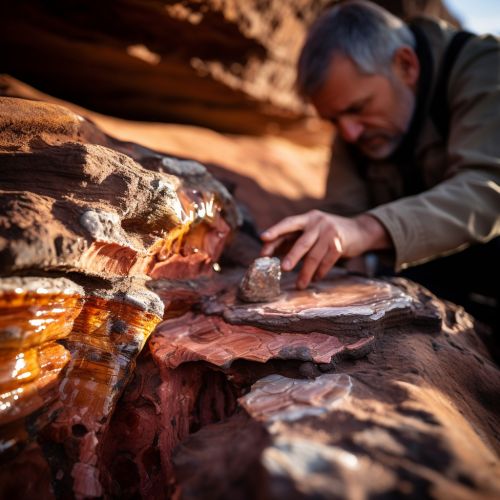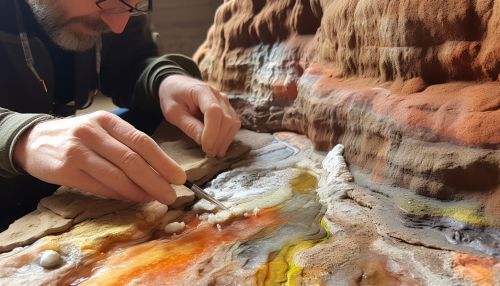Geobiology
Introduction
Geobiology is a scientific discipline that explores the interactions between the biosphere and the geosphere. This field of study combines aspects of geology and biology, and also incorporates insights from biochemistry, geochemistry, and microbiology. Geobiologists aim to understand how life has influenced the Earth's environment over geological timescales, and how these changes in the environment have, in turn, affected the evolution of life.


History
The term "geobiology" was first used in the early 20th century, but the field as we know it today began to take shape in the 1980s and 1990s. This was a time of rapid advancement in both geology and biology, with new technologies and methodologies allowing scientists to explore the Earth and its life in unprecedented detail. The development of tools such as scanning electron microscopes and techniques like radiometric dating provided geobiologists with the means to study the Earth and its life at scales ranging from the microscopic to the global.
Concepts and Methods
Geobiology is a highly interdisciplinary field, drawing on a wide range of concepts and methods from both geology and biology. Some of the key concepts in geobiology include the geological time scale, the carbon cycle, and the concept of biogeochemical cycles. Geobiologists use a variety of methods to study these concepts, including fieldwork, laboratory experiments, and computer modeling.
One of the most important tools in geobiology is the use of isotope geochemistry. This involves studying the ratios of different isotopes of elements in rocks, fossils, and other geological materials to learn about the conditions in which they formed. For example, the ratio of oxygen isotopes can provide information about past temperatures, while the ratio of carbon isotopes can reveal details about ancient ecosystems.
Research Areas
Geobiology encompasses a wide range of research areas, including the study of the early Earth and the origins of life, the role of life in shaping the Earth's environment, and the search for life on other planets.
Early Earth and Origins of Life
One of the key research areas in geobiology is the study of the early Earth and the origins of life. This involves investigating the conditions on the early Earth, the chemical processes that may have led to the formation of the first living organisms, and the earliest evidence of life in the geological record.
Earth's Environment and Life
Another major focus of geobiology is understanding how life has influenced the Earth's environment over geological timescales. This includes studying how organisms have contributed to the formation of rocks and minerals, how they have affected the composition of the atmosphere and oceans, and how these changes have influenced the evolution of life.
Astrobiology
Geobiology also overlaps with astrobiology, the study of the potential for life on other planets. Geobiologists can use their understanding of how life has interacted with the Earth's environment to help predict where and how life might exist elsewhere in the universe.
Applications
The insights gained from geobiology have a wide range of applications. For example, understanding the interactions between life and the Earth's environment can help us predict how ecosystems will respond to changes in climate. Geobiology can also inform the search for oil and other natural resources, as many of these resources are the result of biological processes. Furthermore, geobiology can contribute to our understanding of global environmental issues, such as climate change and biodiversity loss.
